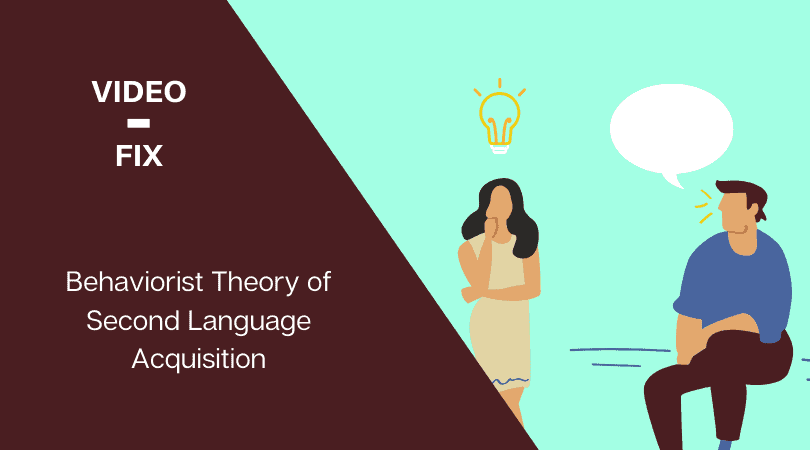 Have you ever heard about behaviorist theory applied as a strategy for Second Language Acquisition (SLA)?
Have you ever heard about behaviorist theory applied as a strategy for Second Language Acquisition (SLA)?
Before giving you an insight into the topic of this week’s Video Fix ‘Behaviorist Theory of Second Language Acquisition’, let’s start with Merriam-Webster’s definition of behaviorism (also known as behavioral psychology): it is […] a school of psychology that takes the objective evidence of behavior (such as measured responses to stimuli) as the only concern of its research and the only basis of its theory without reference to conscious experience […]
Historically John B. Watson is recognized as the father of behaviorism. Behavioral psychology in general believes that all actions of humans and animals are learned behaviors which can be learned and unlearned.
It was Ivan Pavlov who investigated classical conditioning with his experiment using dogs: he rang a bell every time he fed the dogs, teaching them to associate the sound of the bell with food. As a result the dogs salivated every time the bell rang, whether there was food or not. Thus Pavlov discovered a process in which a previously neutral stimulus came to provoke a specific response by being repeatedly paired with another stimulus that evoked the response.
Eventually the American psychologist Burrhus F. Skinner expanded classical conditioning to the so-called operant conditioning. According to this theory, if a reward or reinforcement follows the response to a stimulus, then the response will become more likely in the future.
In the 50s and 60s it became popular to apply behaviorism to all types of learning, including language learning, which gave rise to the behaviorist theory of second language acquisition. The most well-known teaching method that emerged from behaviorism was audiolingualism, where repetitions and drills formed the basis of learning with the aim of habit formation.
Audiolingualism was widely introduced in schools across the U.S. and reached its peak in the 1960s. But, since the learning method did not achieve the desired results (for example, students were unable to transfer the learned language skills to a real communication situation), it lost its popularity quite quickly.
In the late 60s the American linguistic theory began to take a different direction. Part of the reason for this change was Chomsky’s rejection of the behaviorist theory of language learning. Chomsky said that language is not a habit structure, and argued that much of human language is not imitated behavior, “but is created anew from underlying knowledge of abstract rules.”
After this short introductory explanation we invite you to watch the full video and find out more about behaviorist theory and second language acquisition!
You might also be interested in some previous related posts:
- Cinema Fix: Is dubbing detrimental to language acquisition?
- The age factor in second language acquisition
- University Language Centres: new resources and methods for language learning (and self-learning) purposes
- Video fix: How to Learn a Second Language Faster
- Video fix: Why you should play an instrument and learn a foreign language
Written by Iris Rinner – Terminology trainee at the Terminology Coordination Unit of the European Parliament, BA in Modern Foreign Languages and Cultures from the University of Sassari and MA in Specialized Translation from the University of Vienna.
Sources:
- Culatta, Richard (2015) Behaviorist Learning Theory, Available at: http://bit.ly/2jxr4aN (Accessed 23 May, 2017)
- Kendra Cherry (2016) An Overview of Behavioral Psychology, Available at: http://bit.ly/2mOkKeD (Accessed 23 May, 2017)
- Merriam-Webster, Available at http://bit.ly/2qRnZ7J (Accessed 23 May, 2017)
- Jack C. Richards, Theodore S. Rodgers (2014) Approaches and Methods in Language Teaching. Third Edition, Cambridge University Press, Available at: http://bit.ly/2qfTRkr (Accessed 23 May, 2017)

